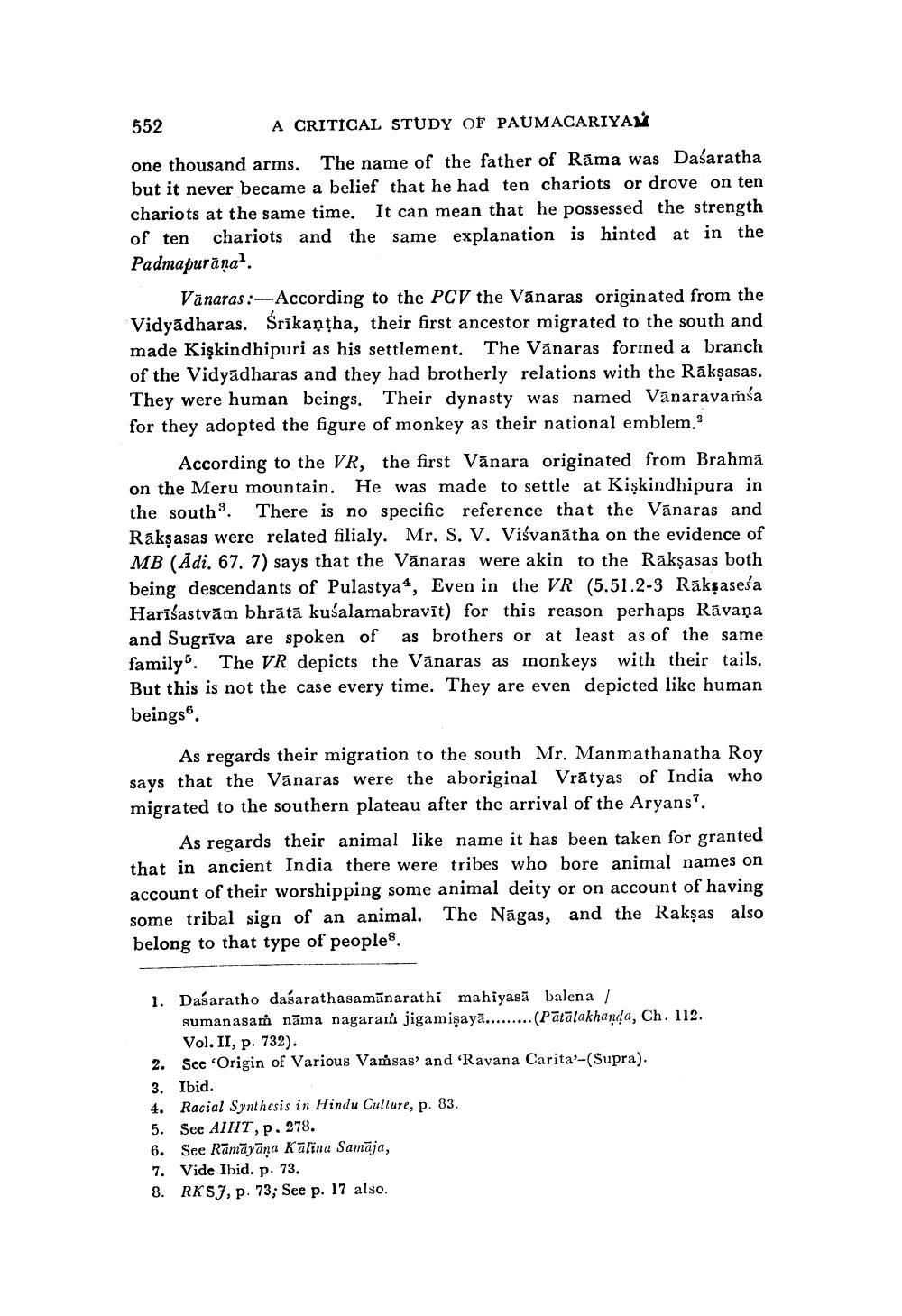________________
552
A CRITICAL STUDY OF PAUMACARIYAM one thousand arms. The name of the father of Rāma was Dasaratha but it never became a belief that he had ten chariots or drove on ten chariots at the same time. It can mean that he possessed the strength of ten chariots and the same explanation is hinted at in the Padmapurāna.
Vänaras: -- According to the PCV the Vanaras originated from the Vidyadharas. Srikantha, their first ancestor migrated to the south and made Kişkindhipuri as his settlement. The Vanaras formed a branch of the Vidyādharas and they had brotherly relations with the Rākşasas. They were human beings. Their dynasty was named Vānaravamsa for they adopted the figure of monkey as their national emblem.
According to the VR, the first Vānara originated from Brahmā on the Meru mountain. He was made to settle at Kiskindhipura in the south. There is no specific reference that the Vanaras and Rakşasas were related filialy. Mr. S. V. Visvanātha on the evidence of MB (Adi. 67. 7) says that the Vānaras were akin to the Raksasas both being descendants of Pulastyao, Even in the VR (5.51.2-3 Rakşaseśa Harišastvām bhrātā kusalamabravit) for this reason perhaps Rāvana and Sugrīva are spoken of as brothers or at least as of the same family. The VR depicts the Vānaras as monkeys with their tails. But this is not the case every time. They are even depicted like human beings.
As regards their migration to the south Mr. Manmathanatha Roy says that the Vánaras were the aboriginal Vrátyas of India who migrated to the southern plateau after the arrival of the Aryans?.
As regards their animal like name it has been taken for granted that in ancient India there were tribes who bore animal names on account of their worshipping some animal deity or on account of having some tribal sign of an animal. The Nägas, and the Rakşas also belong to that type of people.
1. Dasaratho daśarathasamānarathi mahiyasā balena /
sumanasan nama nagaran jigamişayā.........(Pātālakhanda, Ch. 112.
Vol. II, p. 732). 2. See ‘Origin of Various Vanisas' and 'Ravana Carita-(Supra). 3. Ibid. 4. Racial Synthesis in Hindu Culture, p. 83. 5. See AIHT, p. 278. 6. See Rāmāyāna Kalina Samāja, 7. Vide Ibid. p. 73. 8. RKSJ, p. 73; See p. 17 also.




